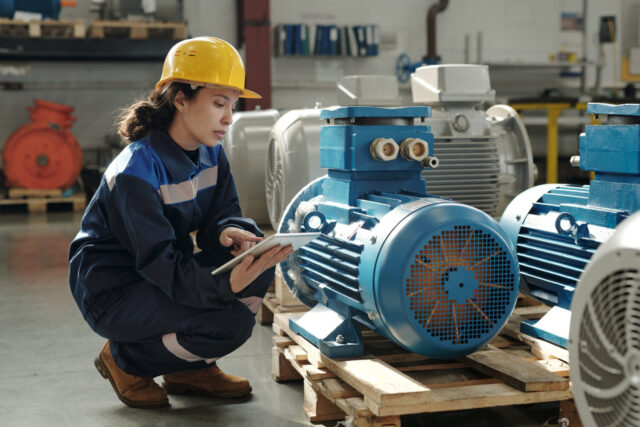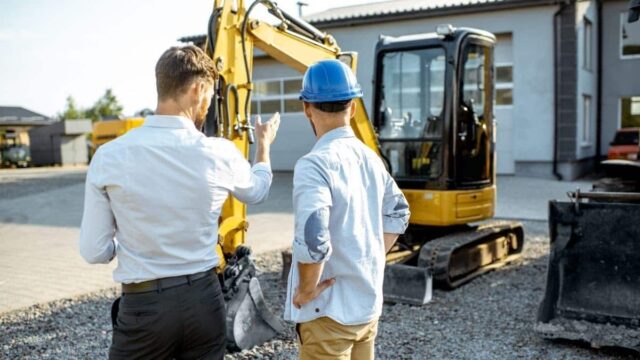
Acquiring new business equipment helps you maintain operational efficiency, adapt to the latest technologies, and stay competitive. However, you might have to deal with the challenge of limited capital. And that leads you to two noteworthy purchasing options: leasing and buying.
Each choice has pros and cons. That’s the focus of this article. Explore the negatives and positives in the following sections before making the critical purchasing decision.
Leasing

Leasing is a contract where the equipment supplier gives you the right to use business equipment while you pay for it in installments. Equipment financing consultants can help you finalize such lease contracts. According to Uplend, partnering with such experts can lead to faster approvals. Below are some pros and cons of leasing:
Pros:
Leasing essentially gives you access to equipment without full upfront payment. Here are some pros of this financing option:
- Lower upfront costs: Business equipment can be costly. Leasing eliminates the burden of raising a substantial amount of money at once for just one particular piece of equipment. This way, you can spare some cash for other critical business needs. That’s especially true for expensive equipment like those used in the construction industry. This sector leads the global equipment rental market, with a forecasted market value of approximately USD 140 billion by 2027.
- Predictable payments: Leasing allows you to make fixed monthly payments. Thus, you can properly budget your business’s funds. Such predictability is critical for survival in the dynamic business sphere.
- Tax advantages: Lease payments can win you tax deductions, reducing your overall cost of leasing. About 77% of small businesses claim that federal taxes were moderate, if not very, burdensome, according to a 2021 tax survey. Thus, any opportunity to reduce the tax burden is welcome.
- Access to cutting-edge equipment: Technology advances rapidly, leading to the release of new equipment at every dawn of the day. Leasing allows you to jump into these trends promptly, ensuring you don’t lag. Staying competitive in the usually crowded business sphere ensures your customers don’t get valid reasons to switch their allegiance to your competitors.
- Reduced maintenance worries: Suppliers who lease equipment usually offer free or subsidized maintenance services for a specified period. This saves you money while also giving you the much-needed peace of mind. You’ll no longer have unexpected repair bills or frustrating equipment downtime, which means seamless operation.
- Flexibility: Leasing options and terms are many. A typical contract will have provisions for lease termination, equipment upgrades, or purchasing at the end of the lease term. This variety of options helps you align your equipment acquisition strategy with emerging needs.
These advantages may make you consider leasing as a strategy for equipment acquisition. But every good thing has potential downsides. Explore them below.
Cons:
It’s crucial to know the downsides of leasing before getting into it. Below are some:
- You never get to own the equipment in the end: With leasing, you only have usage rights, not possession rights. Even at the end of the lease period, you won’t own the equipment. This means perpetual costs for long-term use.
- Higher overall costs: The upfront costs for leasing are often friendly. However, when you calculate the long-term financial implications, the cumulative lease payments might go beyond the purchase price of the equipment. Thus, you must accurately evaluate the leasing costs and get into the contract with full knowledge of the financial implications.
- Early termination penalties: Business can sometimes be challenging, making it impossible to continue with the monthly payments. Or you may no longer need the leased equipment. If you terminate the leasing contract before the agreed date, the financier may impose some penalties, leading to unforeseen financial burdens.
- End-of-lease complications: Problems may arise towards the end of the lease period. It may not be straightforward to return the equipment, purchase it, or agree on residual values. It takes detailed planning to end the contract without disrupting your business flow.
These downsides show the need for a discerning eye when considering leasing as a route to acquire business equipment.
Buying

This is the straight-out purchase and ownership of equipment involving a one-time payment. Explore below the pros and cons of buying.
Pros:
Here are some noteworthy advantages of buying business equipment:
- Outright ownership: Buying makes you the forthright owner of the equipment. Such assets increase your business’s value. It means that you can sell them and still make money out of them when they become surplus to your requirements later on.
- Greater control and customization: Owning equipment allows you to modify or upgrade it as you wish. You’re not bound by the typical leasing restrictions. Thus, your business can fully benefit from cutting-edge equipment.
- No recurring payments: With buying, you make only a one-time payment and forget about it. You’ll never have to pay for the equipment every other month. Such ongoing commitments may be draining, especially when they span several years. One-time payments are especially beneficial for businesses with an unpredictable financial future.
- Potential tax benefits: If your acquired equipment depreciates, you can qualify for tax deductions. Such financial relief helps a lot in a business world where operating costs are skyrocketing.
In essence, buying business equipment is a prudent decision due to the full ownership rights bestowed upon you after purchasing.
Cons:
Outright ownership is indeed advantageous, but it’s not without downsides. Below are some cons of buying business equipment:
- High capital outlay: Upfront equipment purchasing costs are a force to reckon with. Pouring this much cash into one asset can be financially straining, crippling other critical business activities.
- Risk of uselessness: Technology is ever-evolving. A newly acquired equipment may be rendered obsolete a few years down the road. In this case, you may not achieve a positive return on your investment. It may indeed be a loss for your company. Latest statistics reveal that the use of outdated equipment costs U.S. businesses USD 50 billion due to unforeseen downtimes.
- Maintenance and repair costs: Wear and tear is common in equipment. Unless the supplier offers free maintenance, you’ll have to foot the expenses yourself. Keeping the equipment in excellent working condition throughout its lifespan may prove to be costly.
These downsides of buying may make you want to consider alternative financing options for equipment.
Conclusion

Do you think you can now choose the right option for you? You should be able to do that now that you more clearly understand the advantages and disadvantages of your choices. As long as you weigh things out carefully, you can take a step you won’t regret later on.
Wait, so, do you think you still need expert help? If that’s the case, then professional business consultants can be worth checking out. What exactly can they do for you? They’ll provide tailored advice on whether to buy or lease. The recommendation, of course, will depend on your company’s current situation.













